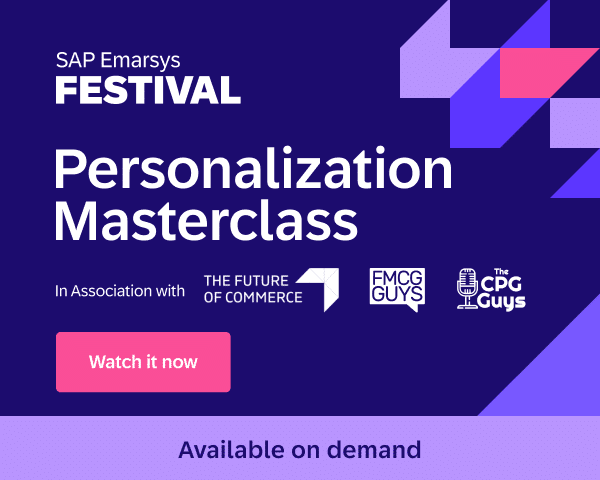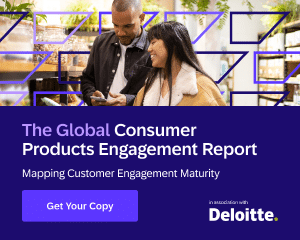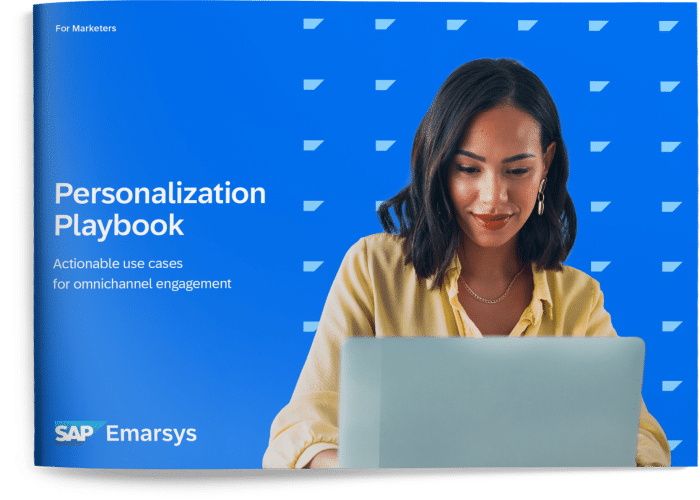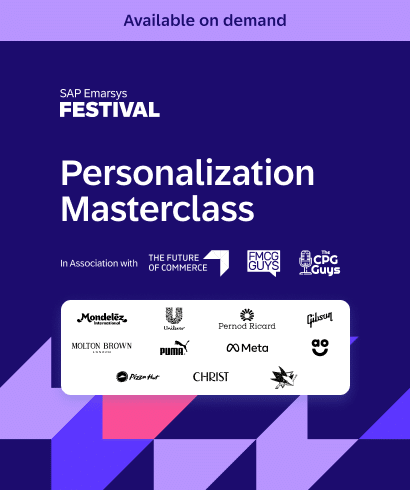What if the key to doubling your profits in 2025 isn’t more customers—but keeping the ones you already have?
In 2025, with customer acquisition costs still soaring (up to 7x higher than retention efforts), keeping your existing customers engaged has never been more critical. But today’s retention game is more complex than ever. Shifting customer expectations, fragmented data, and a crowded tech stack are making it harder to deliver the experiences that drive loyalty.
If you’re a marketing leader asking questions like:
- How do we turn mountains of data into meaningful, actionable insights?
- How can we prove the ROI of retention strategies to the C-suite?
- How do we balance acquisition spend with long-term customer value?
- And how do we keep up with customers who expect everything, everywhere, all at once?
—You’re not alone.
But here’s the good news: Small, strategic shifts in your retention approach can unlock serious returns. Research from McKinsey shows that improving retention by just 5% can boost profits by 25% to 95%.
This article breaks down eight proven retention strategies used by real brands to solve today’s toughest challenges—so you can move from firefighting to future-proofing.
Why Retention Deserves a Bigger Slice of Your Budget
You already know retention matters—but the numbers are more powerful than most marketers realize.
- Existing customers are 50% more likely to try new products.
- They spend 31% more than first-time buyers.
- And the probability of selling to them is up to 70%—compared to just 5–20% for new prospects.
Retention improves margins, reduces risk, and drives predictable revenue. Yet many brands still allocate the majority of their budget to acquisition, chasing volume over value.
If you’re trying to unlock profitable, sustainable growth in 2025, here’s the bottom line: In 2025, retention is no longer a nice-to-have—it’s your most cost-effective growth strategy.
1. Make Loyalty Personal, Not Just Transactional
Points are easy. Loyalty is earned.
Traditional loyalty programs—buy, collect, redeem—no longer cut it with today’s customers. They expect more than just discounts. They want to feel recognized, valued, and rewarded in ways that reflect who they are and how they engage with your brand.
The best loyalty programs in 2025 aren’t standalone initiatives. They’re powered by customer data and seamlessly integrated into the overall experience. That means using purchase history, behavior, and preferences to shape rewards that feel personal and relevant.
What it looks like in practice:
- A beauty brand sends exclusive shade restock alerts to its top buyers.
- A fashion retailer offers early access to product drops for VIP customers based on purchase frequency.
- A coffee chain rewards mobile app users with personalized freebies tied to their favorite order.
When done right, loyalty programs become a goldmine of retention and insight—fueling deeper personalization across campaigns, while giving customers a reason to stick around.
Pro tip: One thing marketers don’t need more of is dark data. So don’t just collect data – make sure you use it too. A smart loyalty program is both a retention engine and a feedback loop—helping you understand what keeps customers coming back, and using that insight to make every interaction better.
2. Build Emotional Loyalty through Brand Purpose
Want customers to stick around? Make them feel like they belong.
Customers today are more likely to stay loyal to brands that stand for something meaningful. Whether it’s sustainability, social justice, or community empowerment, people want to buy from companies that reflect their beliefs.
But purpose only drives loyalty when it’s backed by action. The most successful brands embed purpose into every part of the business—from product design to messaging to post-purchase experience.
Case in point: Molton Brown
Luxury fragrance brand Molton Brown has woven sustainability into its DNA, and it’s paying off in long-term loyalty.
The brand embraced a fully integrated ESG (Environmental, Social, and Governance) strategy—reflected not only in product development (like their refillable bottles) but also in how they market, communicate, and engage across channels.
With SAP Emarsys and Sinch, Molton Brown personalized messaging around sustainable products across email, web, and retail touchpoints—showing ESG-conscious shoppers exactly how their purchases align with their values.
📈 The results?
- Customers who purchased ESG-focused products spent 22% more per order
- ESG shoppers visited 1.7x more frequently than other customers
- Their ESG audience had an average customer value of £120, vs. £60 for non-ESG shoppers
They didn’t stop at product messaging. Molton Brown aligned their content strategy, loyalty programs, and omnichannel journeys to reflect their sustainability mission—turning purpose into performance.
Why it works: Purpose-driven brands create deeper emotional bonds. When customers believe in what you stand for, they’re not just buying your products—they’re buying into your values.
3. Eliminate Friction with Seamless Omnichannel Experiences
Consistency builds trust—and trust keeps customers coming back.
Today’s shoppers expect to move fluidly between channels without hitting roadblocks. They want to browse on mobile, buy in-store, and follow up via email—without repeating themselves or starting over. When brands fail to connect these experiences, it creates confusion, frustration, and churn.
A seamless omnichannel strategy ensures every interaction feels like part of one continuous journey—not a disconnected series of touchpoints.
What that looks like in action:
- A customer adds items to a cart on desktop, then completes their purchase later on mobile—with no hiccups.
- A loyalty reward earned in-store is instantly reflected in the app and redeemable online.
- A service request made via chatbot is visible to the in-store team when the customer visits the next day.
Molton Brown: Doing omnichannel with purpose
As part of their digital transformation, Molton Brown committed to delivering a consistent brand experience across all channels—from eCommerce and luxury department stores to airport retailers and hotel partners.
Their content strategy ensured that product categories were visually and structurally mirrored across platforms, making it easy for customers to recognize their favorite scents or collections whether shopping online or in-store.
They also launched virtual consultations and integrated retail, loyalty, and web channels using SAP Emarsys to maintain a connected journey for every customer.
The takeaway:
Removing friction across channels doesn’t just improve UX—it boosts retention. When customers feel recognized and understood wherever they engage, they’re far more likely to return.
“Whether you walk into a store or shop online, you see the same layout, the same product groupings, the same story—just delivered in the way that works for you.”
4. Add Unexpected Value through Strategic Partnerships
When you think “customer retention,” partnerships might not be the first thing that comes to mind. But the right collaboration can deliver fresh value, surprise-and-delight moments, and compelling reasons for your customers to stay loyal.
Strategic alliances allow you to tap into complementary audiences and offer added utility your brand couldn’t deliver alone. Done right, they make your customer experience feel richer, more rewarding—and more difficult to walk away from.
What this might look like:
- A fitness brand partnering with a healthy meal delivery service to reward loyal customers with exclusive discounts.
- A skincare company collaborating with a mindfulness app to offer stress-relief resources during product launches.
- A fashion retailer teaming up with a resale platform to help customers extend the lifecycle of their purchases.
Why it works: Partnerships help you create more value for your customers, building an ecosystem of benefits that they can tap into. This not only deepens engagement but also builds emotional loyalty by showing customers that you understand their broader lifestyle and needs.
Pro tip: Choose partners that align with your brand values and audience—not just big names. The best partnerships feel seamless, not forced.
5. Use AI to Deliver Context That Converts
When it comes to retention, relevance is everything.
Your customers want more than their first name in a subject line. They want you to understand not just who they are, but where they are in their journey, what they need right now, and how they prefer to engage.
That’s where AI steps in. With the right tools, you can move beyond static segments and deliver real-time, contextually relevant experiences that feel timely, helpful, and personal.
What this looks like:
- A customer browses sneakers online and receives a push notification the next day when their size is back in stock—along with a loyalty reward to complete the purchase.
- A lapsed subscriber receives a targeted email with product recommendations based on previous purchases and a limited-time incentive.
- A frequent in-store shopper is sent a personalized message via SMS about an exclusive preview event at their nearest location.
AI makes this kind of personalization scalable. By analyzing customer behavior, purchase history, preferences, and predicted needs, you can tailor every touchpoint—automatically.
How SAP Emarsys helps you get there
SAP Emarsys offers a suite of AI-powered tools designed to elevate your personalization strategy:
- AI segments: Predict customer behaviors such as likelihood to convert, churn, or engage, enabling targeted campaigns that resonate with individual customer journeys.
- Product recommendations: Deliver personalized product suggestions across email, web, and mobile channels, enhancing the shopping experience and increasing conversion rates.
- Send Time Optimization: Automatically determine the optimal time to send emails to each contact, maximizing open rates and engagement.
- Pre-built tactics: Leverage a library of pre-built automation programs, such as Abandoned Browse and Post-purchase Cross/Up-sell, to quickly deploy effective campaigns that drive retention.
Pro tip: Use AI to spot behavioral shifts early—then trigger automations that turn hesitation into action before disengagement turns into churn.
6. Focus on Customer Success, Not Just Sales
Repeat purchases are great—but real retention starts when your product delivers on its promise.
When brands shift from a transactional mindset to a customer success mindset, everything changes. Marketing becomes less about promotions and more about value delivery. And customers notice.
But why does this shift matter?
Post-purchase is often where the relationship is won or lost. If customers feel supported, informed, and valued after the sale, they’re far more likely to come back. If they feel forgotten, they’re already halfway out the door.
Here’s how to make it happen:
- Educate customers with onboarding journeys, how-to content, and usage tips tailored to their purchase.
- Monitor satisfaction using customer health scores, NPS surveys, or post-purchase feedback.
- Identify warning signs early by tracking engagement drops, delayed usage, or support requests.
- Automate proactive outreach to re-engage or assist customers before they churn.
Example: CUE Clothing
Australian fashion retailer CUE used SAP Emarsys to build a customer success strategy that starts at checkout and continues long after. By removing guest checkout, they ensured 100% of online customers were known—making it possible to deliver tailored post-purchase communications at scale.
They also brought digital tools into the store, using SAP Emarsys recommendations at POS to help staff offer personalized styling advice. And if a customer walked out without purchasing? Staff could create a digital wishlist on their behalf—allowing CUE to follow up later with restock alerts, price drops, or personalized offers.
Pro tip: Work closely with your customer service and success teams. Marketing doesn’t stop at the sale—it just changes gears.
“It’s been all about capitalizing on the opportunity from the inventory, giving the customer value for passing on their details. There’s nothing worse than asking for the customer’s details and not really offering or having anything to offer them in return.”
7. Strengthen Loyalty through Community and Belonging
Want customers to stick around? Make them feel like they belong.
While points and perks may drive short-term engagement, long-term retention is powered by something deeper: a sense of belonging. When customers feel like they’re part of a brand’s inner circle, they’re more likely to advocate, stick around, and forgive the occasional misstep.
Why it works
Community fosters emotional loyalty. It gives customers a reason to engage beyond the product—whether that’s through shared values, peer validation, or the opportunity to be seen and heard. And in a world where competition is fierce and attention spans are short, emotional connection is your edge.
Here’s how to bring it to life:
- Spotlight real customers in your marketing, social content, and loyalty programs.
- Create exclusive experiences for top-tier customers—virtual events, early access, behind-the-scenes content.
- Encourage participation through reviews, polls, user-generated content, or brand ambassador programs.
- Build a feedback loop that shows you’re listening—and acting—on what your community cares about.
Not every brand needs a fan forum or Discord server. But every brand benefits from turning one-way communication into two-way relationships.
Pro tip: Don’t try to manufacture community. Instead, find where your customers are already gathering—and show up with value.
8. Anticipate Customer Behavior - Before it Happens
It’s easier to keep a customer than win them back. Start before they slip away. The smartest brands in 2025 are using predictive insights to spot the warning signs early—and take action before a customer drops off.
AI and machine learning make it possible to analyze behavior patterns, buying frequency, engagement signals, and more to anticipate when a customer is likely to disengage. The key is using that insight to trigger relevant, timely interventions.
Here’s what this looks like:
- Identifying customers who haven’t opened an email in 30 days—and automatically sending a re-engagement offer.
- Spotting high-value shoppers who’ve suddenly stopped browsing—and checking in with a “We miss you” campaign.
- Predicting when a consumable product is about to run out—and sending a replenishment reminder just in time.
It’s not about overloading customers with messages. It’s about showing up with the right one—at the right moment—based on what they haven’t done.
Why this works: Churn doesn’t happen overnight. It’s a slow fade. Predictive retention lets you catch it early, keep customers active, and protect long-term value.
Pro tip: Test and refine your win-back journeys often. What worked six months ago might not work now—and predictive models only stay smart if you keep feeding them fresh data.
The Real Growth Opportunity in 2025? Keeping the Customers You Have
There’s no one-size-fits-all playbook for retention. But the brands that are winning in 2025 all have one thing in common: they treat retention as a strategic priority, not a side project.
They know their customers. They invest in experiences that feel personal, seamless, and valuable. And they act before engagement drops—not after.
You don’t need to overhaul everything at once. Start with one or two high-impact strategies—whether that’s tightening your post-purchase journeys, leaning into AI, or rethinking what loyalty really means. Then build from there.







